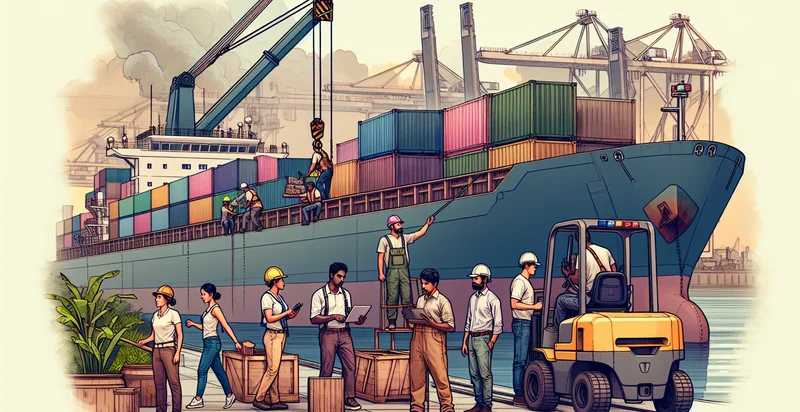Identify if people are loading a barge
using AI
Below is a free classifier to identify if people are loading a barge. Just upload your image, and our AI will predict if people are loading a barge - in just seconds.

Contact us for API access
Or, use Nyckel to build highly-accurate custom classifiers in just minutes. No PhD required.
Get started
import nyckel
credentials = nyckel.Credentials("YOUR_CLIENT_ID", "YOUR_CLIENT_SECRET")
nyckel.invoke("if-people-are-loading-a-barge", "your_image_url", credentials)
fetch('https://www.nyckel.com/v1/functions/if-people-are-loading-a-barge/invoke', {
method: 'POST',
headers: {
'Authorization': 'Bearer ' + 'YOUR_BEARER_TOKEN',
'Content-Type': 'application/json',
},
body: JSON.stringify(
{"data": "your_image_url"}
)
})
.then(response => response.json())
.then(data => console.log(data));
curl -X POST \
-H "Content-Type: application/json" \
-H "Authorization: Bearer YOUR_BEARER_TOKEN" \
-d '{"data": "your_image_url"}' \
https://www.nyckel.com/v1/functions/if-people-are-loading-a-barge/invoke
How this classifier works
To start, upload your image. Our AI tool will then predict if people are loading a barge.
This pretrained image model uses a Nyckel-created dataset and has 2 labels, including No People Loading Barge and People Loading Barge.
We'll also show a confidence score (the higher the number, the more confident the AI model is around if people are loading a barge).
Whether you're just curious or building if people are loading a barge detection into your application, we hope our classifier proves helpful.
Related Classifiers
Need to identify if people are loading a barge at scale?
Get API or Zapier access to this classifier for free. It's perfect for:
- Barge Loading Optimization: This use case involves monitoring the efficiency of loading operations on a barge. By identifying when workers are actively loading cargo, organizations can analyze the speed and efficiency of the process, leading to optimized workflows and reduced loading time.
- Safety Compliance Monitoring: This functionality can help ensure that safety protocols are followed during the barge loading process. By detecting the presence of workers and their loading activities, companies can ensure compliance with safety regulations and reduce the risk of accidents.
- Labor Management: The system can assist supervisors in tracking workforce productivity in real-time during loading operations. By recording and analyzing periods of activity, management can make informed decisions concerning staffing levels and employee allocation.
- Equipment Usage Analysis: By identifying when people are loading a barge, organizations can correlate this data with equipment usage. This can help in understanding the utilization rates of forklifts and cranes, leading to better maintenance schedules and operational efficiencies.
- Historical Data Collection: The function can be used to collect historical data on loading activities over time. This information can be invaluable for business analysis, helping companies improve future loading strategies and project timelines.
- Environmental Impact Assessment: By monitoring the loading process, businesses can analyze the environmental impact of their operations. Identifying loading patterns can help in developing more sustainable practices, such as reducing idle time for equipment and minimizing fuel consumption.
- Integration with Supply Chain Management: The identifier can serve as a data source for broader supply chain analytics. By integrating loading activity data, businesses can optimize inventory management, streamline logistics, and enhance overall supply chain efficiency.


